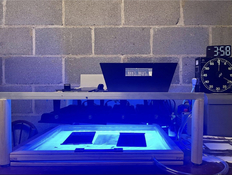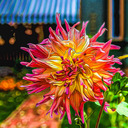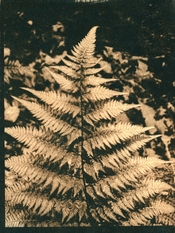Rolleiflexible
Member
I just built a UV LED light box, using inexpensive (but well-built) self-contained fixtures from Onforu (Amazon). They dramatically shorten my exposure times from eight minutes to 30 seconds. An unexpected bonus: The prints I am pulling with them also seem to have darker blacks, clearer highlights, and more apparent detail.
I am wondering: Do longer exposure times cause some sort of veiling effect? Or is something else going on here?
(If anyone wants to explore the lights, Google "CTB96UV" -- that should bring up the Amazon listing. The lights come in pairs, each measuring about 5.5x15 inches -- butt the two together and you have a 11x15 UV LED light source for $69. (Add two more for a 15x22 light source for $138.) Each unit is rated at 96 watts. Build quality is good -- anodized aluminum casings and brackets, and a glass cover. I made a stand from a 2x2-foot sheet of ply, supported by 9-inch legs, and mounted the lights on their brackets underneath.)
Sanders McNew
www.flickr.com/sandersnyc
www.instagram.com/sandersnyc
I am wondering: Do longer exposure times cause some sort of veiling effect? Or is something else going on here?
(If anyone wants to explore the lights, Google "CTB96UV" -- that should bring up the Amazon listing. The lights come in pairs, each measuring about 5.5x15 inches -- butt the two together and you have a 11x15 UV LED light source for $69. (Add two more for a 15x22 light source for $138.) Each unit is rated at 96 watts. Build quality is good -- anodized aluminum casings and brackets, and a glass cover. I made a stand from a 2x2-foot sheet of ply, supported by 9-inch legs, and mounted the lights on their brackets underneath.)
Sanders McNew
www.flickr.com/sandersnyc
www.instagram.com/sandersnyc






